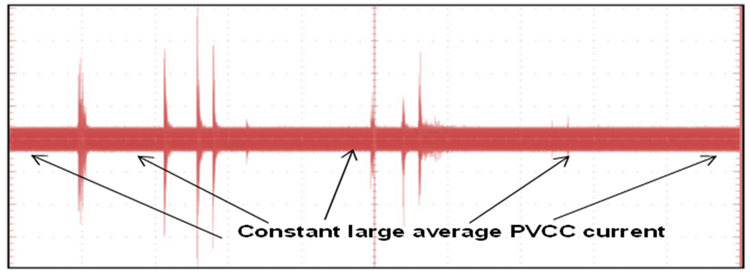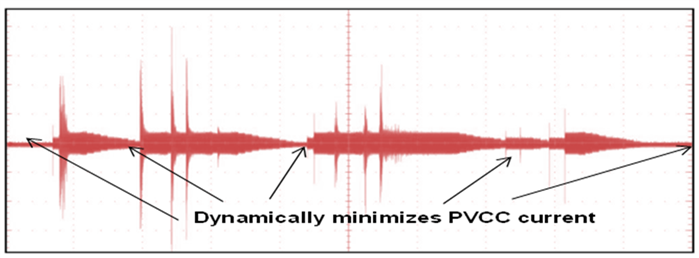SSZTAE4 february 2017 TPA3107D2 , TPA3110D2 , TPA3116D2 , TPA3118D2 , TPA3128D2
Bluetooth® speakers are now fairly common in the marketplace. Many manufacturers offer very basic systems selling for a few dollars to high-end systems selling for hundreds, with varying degrees of audio performance.
The Bluetooth market is highly competitive; hence, you must be very aware of multiple design constraints to develop the right product features at the right cost. These constraints include solution size, component count, cost, efficiency and battery size.
Figure 1 shows the basic blocks inside a Bluetooth speaker:
- Battery. Because this
is a portable application, the battery is a must-have block.
- Cost and size constraints mean that this battery must be as cost-effective, small and light as possible.
- More than likely, you will use the least number of battery cells to achieve the longest play times.
- Power management. This
block provides the right power levels to the rest of the Bluetooth
circuitry.
- Given the cost and size constraints from the battery, the voltage coming from one or two battery cells would be quite low. You will likely need a boost converter to increase the available voltage to the rest of the system.
- The power-management block must include a charger to recharge the battery after portable use.
- Bluetooth system. This
block provides wireless communication to the speaker from a smartphone,
tablet or other Bluetooth-enabled products.
- Bluetooth modules today offer complete solutions for portable audio systems, as they support wireless and wired-in audio natively.
- Audio. This block
contains all of the electronics to drive the speakers in the system.
- Because the signal coming from the Bluetooth module has both low-voltage and low-current capabilities, an audio amplifier provides the signal with the necessary higher voltage and current capabilities to drive the drivers in the speaker system.
- An audio digital-to-analog converter (DAC) may be included in this block to convert the digital audio signal from the Bluetooth module to analog, and to provide additional audio processing in the digital domain to further enrich the customer experience in higher-end systems.
 Figure 1 Bluetooth Speaker Block
Diagram
Figure 1 Bluetooth Speaker Block
DiagramAudio Amplifiers: Class-AB vs. Class-D
On the other hand, Class-D audio amplifiers are highly efficient switching amplifiers that need very little thermal management; but they do require output inductors that are not exempt from EMI concerns.
Play Time, Battery and Efficiency Considerations: System Design Trade-offs
But their very low efficiency means that, in a Bluetooth speaker, the charge from the battery backup will be mostly wasted as heat. This low efficiency comes at a very high cost, as a system that uses a Class-AB amplifier will require additional battery cells to fulfill this requirement.
Class-D amplifiers’ high efficiency makes them ideal for portable audio systems; their high efficiency means that a very low-cell-count battery (even from a single battery cell if selecting the right chemistry) can power a Bluetooth speaker system. This reduces total system cost significantly, as well as weight and size.
Music and Idle-power Losses: Not Every Class-D Audio Amplifier Is Created Equal
As I made the case for Class-D amplifiers’ high efficiency in Bluetooth speaker systems, you should be aware that efficiency is not the only factor when maximizing play time. Obvious additional factors include the power consumption of all of the system blocks when the system is active and shut down; other not-so-obvious considerations include idle power losses in the audio amplifier itself.
A typical music waveform, like the one shown in Figure 2, has some amplitude variability. Note the proportion of “loud” music (high amplitude) to “quiet” music (low amplitude). This waveform shows that audio systems playing typical music will remain most of the time in the “quiet” music range; hence the audio amplifier outputs low-power sound most of the time.
 Figure 2 Typical Music Waveform
Figure 2 Typical Music WaveformPrevious-generation Class-D amplifier solutions like TI’s popular TPA3110D2 and most of the Class-D amplifiers in the market are not efficiency-optimized for low-output power levels. As you can see in Figure 3, the supply current in last-generation Class-D amplifiers remains constant even when the output power level is low or even zero. This constant current wastes battery charge; it shortens play time and increases battery cell count and system cost.
 Figure 3 Last Generation Class-D Amp
Figure 3 Last Generation Class-D AmpNext-generation Class-D amplifiers like the TPA3128D2 use a novel hybrid modulation mode to minimize idle power losses and maximize power savings. Notice how in Figure 4, the supply current to the amplifier decreases dramatically when the output power level is low; this power savings elongates play time, thus decreasing battery cell count and system cost.
 Figure 4 TPA3128D2 performance
Figure 4 TPA3128D2 performanceYou can easily take full advantage of this new feature and its derived cost savings by migrating from the TPA3110D2 to the TPA3128D2, as both solutions are pin-to-pin compatible for easy redesign.
Have you designed a Bluetooth speaker system? If so, what specifications were most important to you? Log in and leave a comment below.
Additional Resources
- If you’re considering designing a portable speaker, purchase the TPA3128D2 evaluation module.
- Check out the TI Audio landing page for audio subsystem diagrams, device recommendations and suggested design considerations.
- Read this application note which shows tests results that prove the performance improvements by the new features of TPA3128D2
- Watch this short video where I discuss the benefits of TPA3128D2.